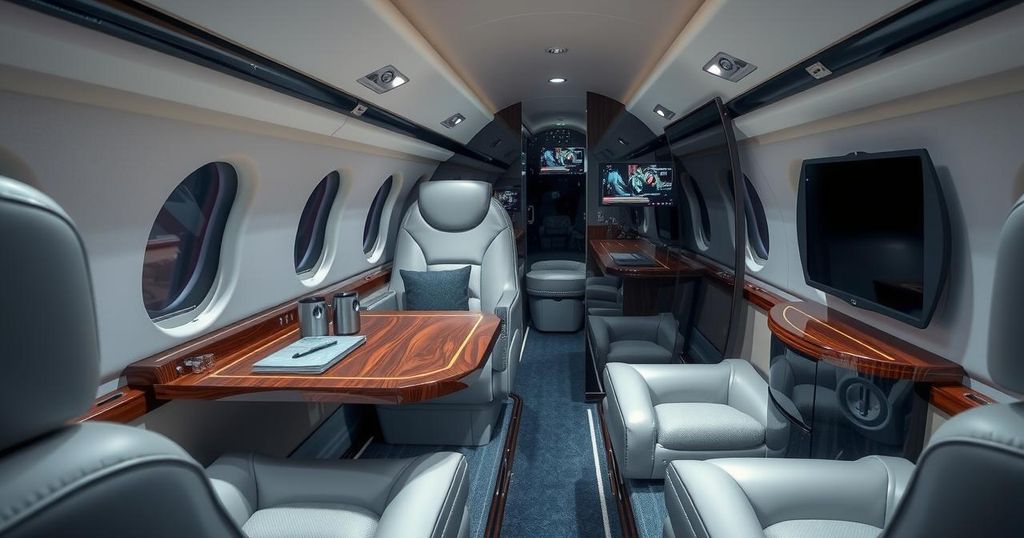World news
AIR FORCE, AIR FORCE ONE, AP, ASIA, BOEING, DONALD TRUMP, EUROPE, FRANKLIN D. ROOSEVELT, FREEDOM OF INFORMATION, IRAN, MILITARY, NATIONAL SECURITY, NORTH AMERICA, POLITICS, QATAR, TROY MEINK, TRUMP, TRUMP ADMINISTRATION, UKRAINE, UNITED STATES, WASHINGTON, WHITE HOUSE, YALTA
Daniel O'Connor
0 Comments
What It Would Take to Convert a Jet from Qatar into Air Force One to Safely Fly Trump
President Trump is keen on using a Qatari jet as an upgraded Air Force One, but significant security modifications are needed. Costs for these upgrades could potentially exceed $400 million. The discussion raises questions about the balance between quick readiness and comprehensive security measures. Boeing is still working on new 747s to replace the current Air Force One, facing various production delays.
In a move that raises eyebrows among security experts, President Donald Trump appears keen on flying on an upgraded Air Force One, notably a luxury jet potentially sourced from Qatar. However, turning this Qatari plane into a viable presidential transport hinges significantly on an array of security modifications, which could cost the government upwards of $400 million according to Air Force Secretary Troy Meink, though he provided few specifics. If Trump wishes to use the jet before the end of his term, he may have to consider omitting some key security features.
Discussions surrounding making this Qatari jet safe for the president are ongoing. White House sources indicate that Trump desires quick preparations, with a focus on meeting security standards as best as possible. Despite this, the timeline and details surrounding the essential modifications remain vague, as only an unnamed official commented on the state of affairs. Trump’s awareness of the security threats is apparent, especially considering he has survived multiple assassination attempts. Yet, he has previously shown a willingness to gamble on security, notably by using his personal phone despite known hacking risks.
To understand what it takes to make an aircraft eligible as Air Force One, one needs to acknowledge that this designation refers to any plane carrying the president. The legacy of Air Force One began with a C-54 Skymaster used by Franklin D. Roosevelt. The current planes in use have undergone extensive changes as Boeing works to create two new 747s set to replace the aging aircraft, but delays and budget overruns have complicated this endeavor, pushing costs beyond $5.3 billion.
The jet’s design requires modern aircraft to have robust survivability and superior communication systems. A decade ago, directives mandated that the new planes should possess four engines for reliability in the event of failures. However, with 747s no longer in production, sourcing the necessary parts poses a challenge. Furthermore, these jets need specialized communications technology, anti-jamming capabilities, and defenses against surveillance to ensure secure command over military operations during crises.
If Trump decides to retrofit the Qatari plane to meet these presidential standards, estimates indicate costs could soar to $1.5 billion and take several years to complete, although Meink argued these costs may be less due to associated expenses from the ongoing new plane project. On the other hand, Rep. Joe Courtney warned that any plan resembles a billion-dollar undertaking to upgrade the jet’s systems.
Trump holds the power to waive certain security requirements, thereby potentially elevating risks while expediting the modification to the jet. This concern is particularly relevant, as there have been reductions in capabilities for the next generation of Boeing’s 747s due to scaling back original plans. In spite of reservations, Trump might prioritize the aircraft’s aesthetics, aligning its look more closely to his own personal aircraft style.
After inspecting the Qatari jet at a nearby Florida airport in February, Trump may be eager to see slow moving maintenance and operational ambitions reached soon. Yet, Sen. Tammy Duckworth highlighted the serious implications of using an untested aircraft for such sensitive operations. She noted that compromising on full security checks would not only be reckless but also an irresponsible use of taxpayer funds.
Presently, Boeing faces challenges in advancing the 747s due to technical issues that have drawn scrutiny. The Government Accountability Office has documented these setbacks in their recent reports, citing problems like corrosion cracks and interior noise discomfort. For now, the Air Force is actively collaborating with Boeing to hasten the delivery of at least one of the replacement planes, but full evaluations and certifications will also have to occur before any operational usage in real-world situations. Ultimately, how Trump navigates these complexities remains to be seen, with many speculating that shortcuts may be taken in light of his desires.
In summary, President Trump’s interest in utilizing a Qatari jet as Air Force One raises critical security questions and logistical challenges. The required upgrades to meet presidential standards could be costly and time-consuming, with significant implications for national security. While Trump’s inclination to expedite the process might lead to overlooking certain safeguards, experts urge caution to avoid potential vulnerabilities. As Boeing strives to complete new aircraft, the fate of this unusual Air Force One may hinge on a delicate balance between haste and security diligence.
Original Source: www.thespec.com




Post Comment